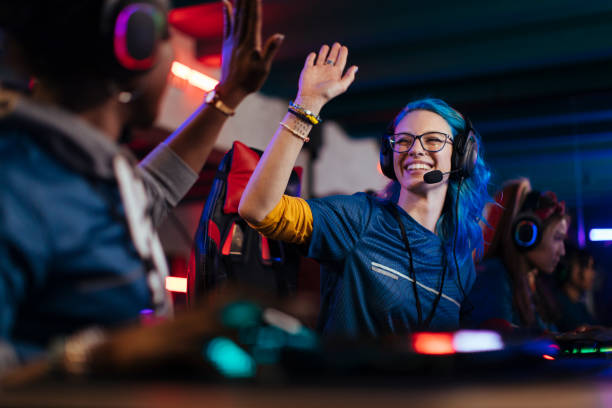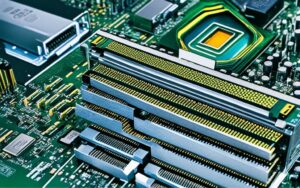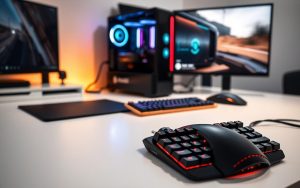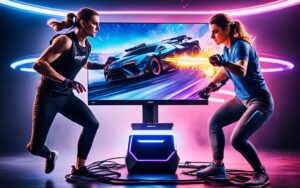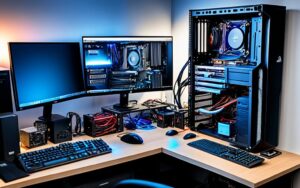Table of Contents
From Hardware to Strategy: The Influence of PC Performance on Callouts in Counter-Strike 2 and Global Offensive
In the competitive gaming sphere, the performance of each personal computer is well known to radically affect gameplay experiences and strategies. This is particularly evident in first-person shooters like Counter-Strike 2 and Counter-Strike: Global Offensive (CS2 and CS:GO)—prevalent gaming titles where the efficiency of in-game communication and strategic execution notably is contingent upon hardware faculties.
In this context, a high-performance PC affirms smoother frame rates and more rapid response times, ultimately improving the accuracy and promptness of callouts, thus governing the overarching efficacy of team strategies. Ergo, this article examines how myriad facets of PC performance impact callouts and strategies in these popular releases, citing critical considerations for every serious, modern PC gamer.
The Function of PC Performance in Competitive Gaming
In first-person shooters, accuracy and reaction time are critical elements. PC performance—incorporating hardware and software—is integral to efforts from participants to perform optimally. Thus, high frame rates, low latency and stable performance can radically impact outcomes diverging between what is considered a successful engagement and a missed opportunity. These rudimentary characteristics contribute to the effortless execution of in-game activities and fluid communication.
In CS2 and CS:GO, these facets profoundly determine outcomes for individual gameplay and overall team strategy and communication in equal measure. As a direct result, optimised performance affirms that participants can deliver accurate CS Callouts, maintain precise aim and react efficiently to dynamic in-game scenarios, in turn positively affecting both individual and team cogency. Meanwhile, consistent performance levels assist in mitigating consequences arising from technical distractions, permitting players to focus more intently on strategic execution and teamwork.
Frame Rate and Its Impact on Callouts
Frame rate—measured in frames per second (FPS)—is a principal constituent part of PC performance. With this in mind, higher frame rates contribute to slicker visual experiences and more responsive controls. In CS2 and CS:GO, partakers operating at high frame rates typically react more rapidly to in-game events, ultimately making their callouts considerably more accurate. Conversely, a lower frame rate can present delays and visual stuttering, potentially resulting in missed cues and slower reaction times.
Callouts—i.e., the verbal communication of enemy positions and strategic intentions—are dependant on expedient and precise information. However, when the frame rate of a participant is suboptimal, it can feasibly hinder their ability to perceive and communicate vital details. This can subsequently result in less effective callouts, affecting the ability of the whole team to coordinate effectively and execute strategies. Furthermore, players experiencing frame rate issues often labour in the process of possessing consistent aim, negatively complicating their position in precise callout situations.
Resolution and Visual Clarity
Resolution settings determine the clarity of visual elements in most modern PC games, where higher resolutions provide more elaborate and clear images. For first-person shooters, they can make a considerable difference when differentiating between distinct targets and environmental features. In CS2 and CS:GO, partakers with higher resolution settings can more accurately pinpoint enemies and strategic points on the map. This enriched visual clarity heightens the exactness of callouts by delivering more exact information about enemy locations and their movements.
Contrariwise, lower resolutions have been known to blur visual details, rendering it more arduous for players to recognise and communicate consequential aspects of the game. As a direct result, this can lead to less effective callouts, where players flounder when attempting to dispatch accurate information about enemy positions or map features. Moreover, the ability to discern fine details also affects strategic decisions, due to players depending on visual clarity to execute complex manoeuvres and tactical scenarios.
Latency and Its Overarching Effects on Communication
Latency—or “ping”—denotes the delay between the actions of a player and the response of the game. In this context, lower latency confirms commands and actions are executed efficiently; meanwhile, higher latency can introduce conspicuous delays. In CS2 and CS:GO, low latency is vital in efforts to sustain smooth gameplay and effectual communication. In contrast, high latency can detrimentally interfere with the timing of callouts, with lags emerging between players observing an event and it being disseminated among the team.
This pause between actions can radically affect the ability of the team to respond instantly to hazards or transitions in the game territory. Efficacious callouts demand real-time information, whereas latency-related problems sabotage the accuracy and practicality of communication. Moreover, consistently high latency typically results in persistent communication issues, exacerbating problems with coordination and ultimately hindering team performance in the long run. Thus, regular monitoring and optimisation of network conditions are elementary in efforts to mitigate these disruptions and guarantee coherent teamwork.
Hardware Specifications and Gameplay Consistency
The overall hardware specifications of a PC—including the processor, graphics card and memory—notably contribute towards general gameplay consistency. High-performance hardware confirms the game operates fluidly without disturbances, facilitating participants to concentrate on strategic efforts and communication instead of technical issues. In CS2 and CS:GO, inconsistent performance due to hardware limitations can result in frame drops, stuttering or crashes; these issues can disturb the flow of the game and detrimentally affect callout quality.
For example, a premature drop in frame rate during a crucial moment can lead to a missed opportunity when providing consequential information, impacting team coordination and competency. Moreover, hardware inconsistencies can exacerbate disparities between the experiences of players, bringing about uneven gameplay and further problematising team strategy. Ergo, confirming all team members possess compatible and high-quality hardware can diminish these issues and promote an optimal competitive backdrop.
Network Stability and In-Game Communication
Network stability is another dimension and critical aspect of PC performance substantially influencing callouts. Here, a steady and dependable internet connection confirms participants can communicate adeptly with contemporaries without interruptions or distortions. In CS2 and CS:GO, voice communication is indispensable for coordinating strategies and reacting to in-game developments. Network instability—such as frequent disconnections or packet loss—can induce delays or warpings in voice communication. This can trigger misunderstandings or result in incomplete information being intercommunicated between players.
Effective callouts rely on clear and consistent communication while network issues can impede the capability to relay accurate information in real time. Similarly, persistent network troubles can deteriorate overall team morale and coordination, compounding the consequences of strategic execution and in-game performance. Ergo, prioritising network reliability and addressing connectivity matters speedily can sustain effective communication and augment general team cohesion.
The Influence of Settings and Customisation
Players usually customise game settings to maximise performance criteria based on their subjective hardware capabilities. Adjustments such as reducing graphical settings or disabling specific visual effects can support high frame rates and diminish latency. In CS2 and CS:GO, these customisations affect how proficiently partakers can provide callouts and implement strategies. Custom settings favouring performance over visual fidelity can improve gameplay responsiveness, culminating in more precise and opportune callouts.
However, CS players must aim to achieve an optimal equilibrium between performance and visual clarity to affirm they can still perceive critical details within the game surroundings. Customisation preferences can radically deviate based on individual preferences and hardware capabilities; however, the ultimate goal indubitably remains to optimise performance and communication in equal measure. Thus, effective customisation can support players in adaptation to diverse competitive scenarios and underpin more consistent performance under myriad conditions.
Final Notions
PC performance plays a pertinent function in configuring the efficacy of callouts and prevailing strategy in CS2 and CS:GO; high frame rates, resolution settings, low latency and stable hardware all assist in achieving a slicker and more reactive gaming undertaking. These multifaceted elements enrich the accuracy and timeliness of callouts, boosting players in their endeavours to convey vital information and execute strategies more adeptly.
In 2024, as competitive gaming continues to mature and expand, the clout of PC performance on gameplay and communication is persistently a critical deliberation for serious gamers. Thus, comprehending the association between hardware capabilities and in-game strategies assists gamers and their teams to optimise their performance and accomplish greater triumphs in CS2 and CS:GO. As this article has comprehensively outlined and argued, investing in high-quality hardware and understanding its consequences can immensely augment the overall gaming experience and effectiveness.


